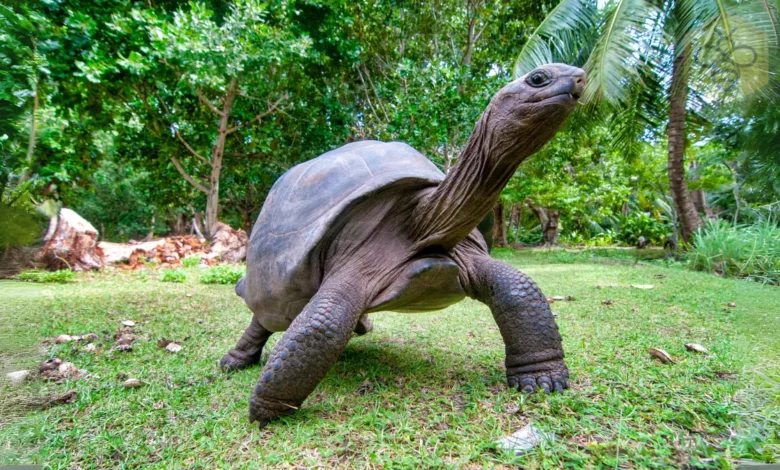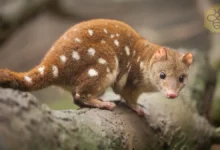Aldabra Giant Tortoise: The Gentle Giants of the Indian Ocean

Aldabra Giant Tortoise: The Gentle Giants of the Indian Ocean
Aldabra Giant Tortoise
Introduction
The Aldabra Giant Tortoise is one of the largest tortoises in the world, known for its impressive size, long lifespan, and unique role in its native habitat. Endemic to the Aldabra Atoll in the Indian Ocean, this ancient species has evolved in isolation, making it a true marvel of nature.
Scientific Overview
Scientific Name
The scientific name of the Aldabra Giant Tortoise is Aldabrachelys gigantea.
Common Name
It is commonly known as the Aldabra Giant Tortoise or simply the Giant Tortoise.
Scientific Classification
Types of Giant Tortoises
While the Aldabra Giant Tortoise is unique to its region, it is often compared to the Galápagos Giant Tortoise. Both species exhibit similar traits due to convergent evolution, despite being geographically distant.
Habitat and Distribution
The Aldabra Giant Tortoise is native to the Aldabra Atoll in the Seychelles, an isolated coral atoll in the Indian Ocean. This remote habitat, free from large predators, has allowed the tortoise population to thrive. Within the atoll, Aldabra tortoises can be found in grasslands, scrublands, and mangrove swamps, where they graze freely on the vegetation.
Physical Characteristics
Size and Weight
Aldabra Giant Tortoises are one of the largest tortoise species:
- Length: They can grow up to 4 feet in length.
- Weight: They can weigh between 330-550 pounds, with males being larger than females.
Appearance
Aldabra Giant Tortoises have a domed shell, known as a carapace, which can vary in shape. Their thick, scaly skin and sturdy limbs help support their massive bodies. With small, round eyes and a slow, deliberate gait, these tortoises have a gentle appearance that reflects their calm, herbivorous nature.
Diet and Feeding Habits
The Aldabra Giant Tortoise is primarily herbivorous, feeding on a wide range of vegetation including grasses, leaves, flowers, and fruits. In times of scarcity, they have been known to eat small invertebrates and even carrion. Their diet plays an important role in maintaining the vegetation balance of the Aldabra Atoll, as their grazing encourages new plant growth.
Predators and Threats
In their natural habitat, Aldabra Giant Tortoises face few natural predators due to their size and the remote location of the atoll. However, they are vulnerable to human activities, such as habitat encroachment, climate change, and the potential introduction of invasive species. Human exploitation in earlier centuries also greatly reduced their numbers, leading to conservation efforts to protect this species.

Reproduction, Hatchlings, and Lifespan
Aldabra Giant Tortoises reproduce slowly, which has implications for their conservation. During mating season, which can occur year-round, females lay between 9-25 eggs in sandy or shallow soil. After an incubation period of around 8 months, hatchlings emerge, but their survival rate is low due to predation and environmental factors. Remarkably, Aldabra tortoises are known for their long lifespan, often living over 100 years in the wild, with some individuals in captivity reported to live up to 150 years.
Population and Conservation Status
The Aldabra Giant Tortoise is currently listed as a “Vulnerable” species due to its limited range and slow reproductive rate. Conservation efforts, particularly on the Aldabra Atoll, are essential in maintaining a stable population. The Seychelles government, along with international organizations, works to protect this unique species and its habitat. The atoll itself is a UNESCO World Heritage Site, ensuring long-term conservation support.
Behavior and Social Structure
Social Behavior
Aldabra Giant Tortoises are generally solitary, though they may gather in groups around food sources. They are known for their slow and relaxed lifestyle, spending much of their time basking in the sun or grazing. Unlike many reptiles, they have shown signs of social interaction, particularly during feeding or in resting areas.
Basking and Thermoregulation
As ectothermic (cold-blooded) animals, Aldabra tortoises rely on external temperatures to regulate their body heat. They can often be seen basking in the sun during cooler parts of the day and seeking shade or caves to cool down when temperatures rise.
Ecological Role
Aldabra Giant Tortoises play a crucial role in their ecosystem. By grazing on vegetation, they help shape the landscape of the atoll and prevent overgrowth, which allows other species to thrive. They also act as seed dispersers, contributing to the regeneration of plants across their habitat. In this way, they function similarly to large herbivores like elephants in other ecosystems.
FAQs About Aldabra Giant Tortoises
- How long can Aldabra Giant Tortoises live?
Aldabra Giant Tortoises can live over 100 years, with some individuals reaching up to 150 years in captivity. - What do Aldabra Giant Tortoises eat?
They are herbivores, feeding on grasses, leaves, flowers, and fruits, though they may occasionally consume invertebrates if food is scarce. - Are Aldabra Giant Tortoises endangered?
They are classified as “Vulnerable” due to their limited distribution and slow reproduction rate, but conservation efforts are helping to protect the species. - How big do Aldabra Giant Tortoises get?
They can grow up to 4 feet in length and weigh between 330-550 pounds, making them one of the largest tortoise species. - Do Aldabra Giant Tortoises make good pets?
Due to their large size, long lifespan, and specific care requirements, they are not suitable as pets for most people and are best kept in protected environments.
Conclusion
The Aldabra Giant Tortoise is a fascinating example of evolutionary adaptation, embodying resilience and longevity. Its unique role in the ecosystem, remarkable size, and gentle demeanor make it a species worth protecting. Through continued conservation efforts, we can ensure that these gentle giants continue to roam the Aldabra Atoll and serve as ambassadors for their fragile environment.


